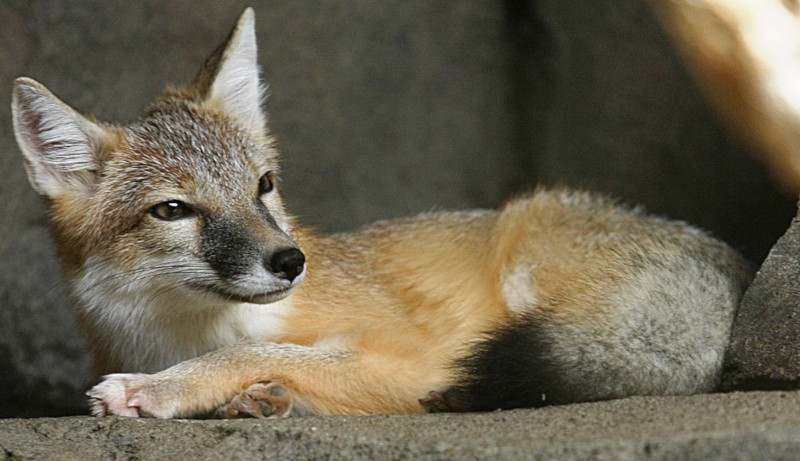
Swift Fox Facts
- The simple yet descriptive term of Short Fox serves as the commonly used name for a small variety of wild canine. In scientific circles, however, this remarkable mammal bears the name of Vulpes velox. By either term, though, it’s an important species.
- That fact may surprise some people, though, if they make assumptions based on size. That’s due to the fact that this animal represents the smallest of the wild dogs varieties native to its part of the world. Size, however, remains unimportant in Nature.
- Though long known to the Indigenous Peoples of the region, Captain Lewis of the Lewis and Clark expedition became the first known European to spot the animal. That first recorded encounter occurred on July 6, 1805, as noted in his journal.
- At that time, the marvelous mammal appeared in large numbers. Sadly, though, as settlers moved into its region, its numbers began to dwindle. By the 1930’s, it ranked as an endangered species, mainly due to control programs targeting coyotes and wolves.
- Thankfully, however, concerted reintroduction programs began in 1983. Since that time, its population appears to have rebounded successfully. The IUCN, therefore, currently lists the Swift Fox as Least Concern of its red List of Threatened Species.
- Yet, this status remains sensitive to various factors. For now, it only occupies about 40% of its original range. Habitat loss, due to continued human expansion, additionally remains a factor. Its greatest threat, though, no doubt consists of climate change.
Related Articles
Swift Fox Physical Description
While visually pleasing to those who appreciate wild canines, the Swift Fox does not garner that appreciation due to sheer size. Not only does it rank as the smallest wild canid in its part of the globe, in fact it qualifies as among the smallest of related species in the world.
Other than sheer size, it shares many traits with the other canids on the planet. Among those is the physiological principal of sexual dimorphism. In its particular case, the males of the species develop as larger than the females. The difference, though, remains quite minor.
Overall, the mammal averages a height of roughly 12 in (30 cm). In length, meanwhile, it typically reaches about 31 in (79 cm), from the head to the end of the tail. The weight of the animal, furthermore, generally only ranges from between 5 – 7 lb (2.3 – 3.2 kg).
In terms of appearance, the Swift Fox displays a pattern of colors that provides natural camouflage in its native environment. This typically consists of a fairly dark tan, almost grayish shade. It also usually presents a tannish yellow on its sides and the legs.
The rest of the body presents a different color pattern, though. Its chest, throat, and stomach typically present colors ranging from off-white to a pale yellow. Black patches also appear on its muzzle. Quite distinctively, the ears also develop as comparatively large.
- Kingdom: Animalia
- Phylum: Chordata
- Class: Mammalia
- Order: Carnivora
- Family: Canidae
- Genus: Vulpes
- Species: V. velox
Swift Fox Distribution, Habitat, and Ecology
Sadly, the beautiful Swift Fox once had a much more extensive range of habitation than it does today. That’s because it evolved as native to a relatively wide swathe of North America. In fact, that territory covered parts of two of the three countries on the continent.
More precisely, it lived from western Canada, through the Great Plains to Texas, in the United States. Unfortunately, it disappeared from Canada by 1938. Even though it’s since been reintroduced, its numbers remain few, appearing in scattered small groupings.
The endemic habitat of this marvelous small mammal consists of regions of deserts and shortgrass prairies. In these environments, its natural coloring allows it to blend in successfully, aiding its survival. There, the creature lives in dens it builds in sandy soil.
The common name of Swift Fox derives from the simple fact that this animal remains capable of impressive speeds. Individuals sometimes reach speeds in excess of 31 mph (50 kph). This both aids the species in hunting and evading its own natural predators.
In terms of dietary habits, it’s technically classified as a carnivore. This species actually feeds as an omnivore, however. It also tends to feed quite opportunistically. Mainly consuming meat, this small predator hunts and feeds on any small animals it can catch.
This diet most commonly includes such prey as small reptiles, birds, amphibians, fish, insects, and mammals. It does nonetheless consume small quantities of plant matter. Local grasses and berries sometimes serve as a supplement for this intrepid hunter.
Species Sharing Its Range
Check out our other articles on 5 Spectacular North Carolina Spiders, Nicobar Pigeon, Rio Tinto, Holy Ghost Orchid, Striped Possum, Lord Howe Island Stick Insect, Jackson’s Chameleon
